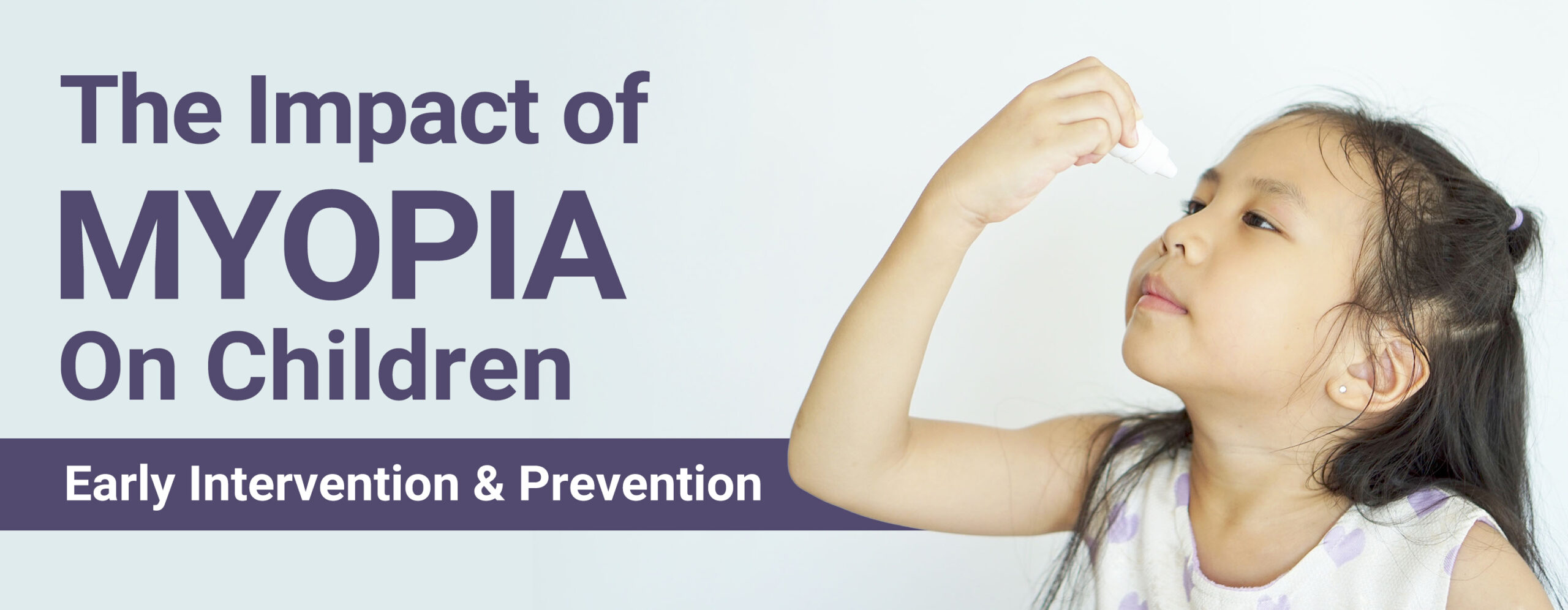
-
 Posted By shubham dhyani
Posted By shubham dhyani -
-
Comments 0
Let’s be honest—how many times have you spotted a child struggling to read the board in class or squinting at road signs during a bus ride? If you live in Delhi NCR, chances are it’s becoming more common. This isn’t just a coincidence. Myopia in children is on the rise, and faster than most of us expected.
It’s Not Just “Specs” Anymore
We used to think: “Okay, the kid needs glasses, big deal.” But it is a big deal now. Myopia in children starts early—often before the age of 10—and doesn’t just stop there. It tends to get worse as the child grows. And while the glasses may help for now, the risks of doing nothing else are real.
Children with myopia often complain of headaches, eye strain, or just not enjoying outdoor play. School becomes tough, and so does focusing during games or homework. But what’s scarier is what can come later if we ignore it.
What’s Causing This Surge?
Let’s not sugarcoat it: we live in an urban jungle. Kids are spending less time outdoors and more time on screens. After COVID, online classes made screens a necessity, not a luxury. Add in video games, homework on phones, and indoor lifestyles—and the result? We’ve got a myopia explosion.
And if both parents wear glasses, the risk doubles. But even if they don’t, lifestyle alone can trigger it. That’s why childhood myopia prevention needs to start before symptoms even show up.
Some common habits that are hurting our kids’ eyes:
- Too much screen time without breaks
- Reading in dim light
- Hardly any outdoor play
Long hours of near work (books, devices)
It’s Not Just About Seeing Blurry
This part really hits home. People assume myopia just means a higher power every year. But unchecked, it leads to scary stuff:
- Retinal detachment: As the eyeball grows longer, the retina stretches and thins. One small tear can lead to permanent vision loss.
- Glaucoma and early cataracts: Myopic eyes are at greater risk. And in India, these often go undetected until it’s too late.
- Macular degeneration: Basically, the centre of your child’s vision weakens. Reading, writing—even recognising faces—can become tough.
That’s why early intervention for myopia is more than just a doctor’s suggestion. It’s a responsibility.
Also Read: – Signs That Suggest Your Child May Need an Eye Check-up
So, What Can Parents Actually Do?
Here’s the silver lining: we’re not helpless. There are simple, doable things that can make a big difference.
Get Outside
It sounds basic, but even two hours a day of natural sunlight helps. Let your child run, play cricket, cycle—anything under the open sky. Natural light slows down eye elongation, which is the root of myopia.
Follow the 20-20-20 Rule
Every 20 minutes, your child should look at something 20 feet away for 20 seconds. It’s not complicated. Just remind them when they’re doing screen work or reading.
Make Study Time Eye-Friendly
Good lighting, correct posture, and regular breaks go a long way. If your child is leaning too close to books or screens, that’s a red flag.
Real Treatments That Work
At AK Institute of Ophthalmology (AKIO), we’ve seen these methods actually change outcomes:
- Low-dose Atropine drops: These eye drops are gentle and proven to slow progression by 50-60%. Used under supervision.
- Ortho-K lenses: Worn overnight, these reshape the cornea temporarily. Kids can go lens-free during the day!
- Peripheral defocus contacts: These lenses shift light in a way that reduces stress on the growing eye.
Every option depends on the child’s age, current power, and how fast it’s increasing. That’s why regular eye exams are non-negotiable.
Why AKIO Is Where You Want to Start
Located in the heart of Delhi, AKIO isn’t just another clinic.Parents don’t just walk in worried, they walk out informed and supported.
When it comes to childhood myopia prevention, we know that timing matters. We’ll help you figure out whether your child needs lifestyle fixes, drops, or lenses—and we’ll track their progress over time.
Final Word: Don’t Wait for the Headaches to Start
Here’s a simple checklist you can follow:
- Schedule a proper eye exam by age 5
- Cut down non-essential screen time
- Watch out for complaints like squinting or headaches
- Talk to a pediatric eye specialist if you notice signs
Myopia isn’t just a phase. But with the right attention, it can be slowed or even stopped.
And trust us, your child won’t thank you now, but their 25-year-old self definitely will.
AKIO stands out as a premier Retina Hospital in Delhi, offering advanced treatments led by experienced retina specialists in Delhi. Whether you need expert diagnosis or modern surgery, our expert team of doctors perform personalised eye treatment.
Recent Posts
- Why You Need a Retina Specialist for Cataract Surgery – Cataract + Retina Issues Together
- Retina Injections (Anti-VEGF): Procedure, Cost, Effectiveness, Risk & Recovery Experience
- Early Signs of Retinal Detachment You Should Never Ignore
- Floaters vs Retina Detachment – How to Know the Difference?
- Manage Your Retina Conditions: Simple Healthy Habits for Better Vision



